Steel stud roll forming machine is one of the most significant pieces of equipment that is used in the manufacture of steel profiles and sheet metal products. This article is a guide to steel stud roll forming machine. It covers working principle, design and different manufacturers of steel stud roll forming machine.
What is a Steel Stud Roll Forming Machine?
A steel stud roll forming machine is a type of construction equipment that is used to create steel framing for walls. The machine can be used to create both interior and exterior wall framing. The process of creating steel framing with a roll forming machine is known as “roll forming.”
Steel studs are commonly used in both commercial and residential construction projects. They are strong and durable, which makes them ideal for use in load-bearing applications. Steel studs are also fire resistant and termite proof, which makes them a popular choice for use in areas where these pests are common.
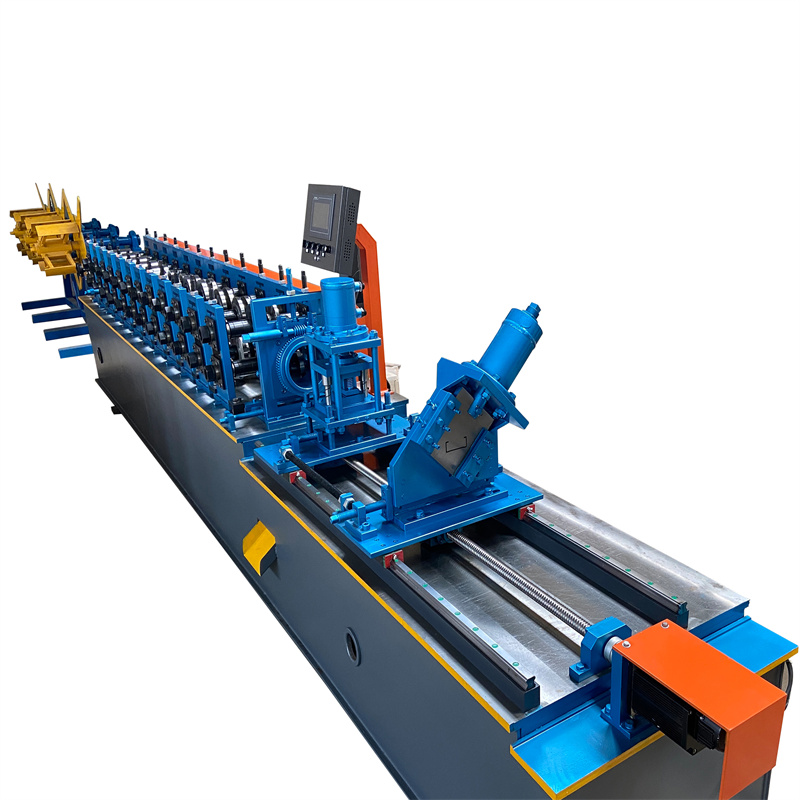

How Does a Steel Stud Roll Forming Machine Work?
A steel stud roll forming machine is a type of construction equipment that is used to create steel framing for walls. The machine works by bending and cutting steel sheets into the required shapes and sizes.
The first step in using a steel stud roll forming machine is to load the steel sheets onto the machine. The sheets are then fed through a series of rollers that bend them into the desired shapes. Once the sheets are in the desired shape, they are cut to size and then delivered to the construction site.
How to Buy a Steel Stud Roll Forming Machine
When it comes to choosing a steel stud रोल बनाना machine, there are a few things you need to keep in mind. Here is a quick guide on how to buy a steel stud roll forming machine:
- The first thing you need to consider is the size of the machine. There are machines that are designed for small projects and there are also those that are made for large projects. Choose the one that will best suit your needs.
- Another thing you need to take into account is the speed of the machine. If you will be using the machine for commercial purposes, then you should opt for a faster model. Otherwise, a slower model would suffice.
- You also need to consider the price of the machine. There are machines that are very affordable and there are also those that are quite expensive. Choose the one that fits your budget.
- When buying a steel stud roll forming machine, make sure to check its warranty and return policy just in case something goes wrong with it. This way, you can get your money back or have it replaced if needed.
Tips for Using a Steel Stud Roll Forming Machine
If you’re looking for a steel stud roll forming machine, there are a few things you should keep in mind to ensure you get the most out of your investment. Here are a few tips:
- Make sure you have the right machine for the job. There are different machines designed for different applications, so it’s important to choose one that’s well-suited for your needs.
- Read the manual carefully before operating the machine. This will help you understand how to properly use and maintain the machine, and avoid any accidents or injuries.
- Keep the area around the machine clean and free of clutter. This will help prevent accidents and also prolong the life of the machine.
- Inspect the machine regularly to make sure all parts are in good working condition. This will help prevent downtime and keep your production line running smoothly.
- Follow all safety guidelines when operating the machine. This is important for your safety as well as the safety of those around you.
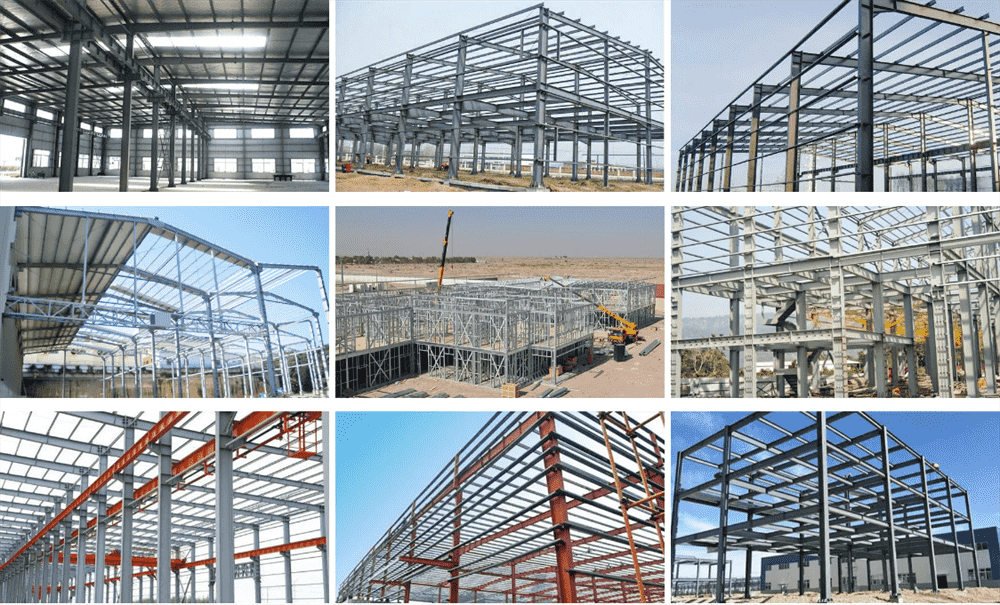
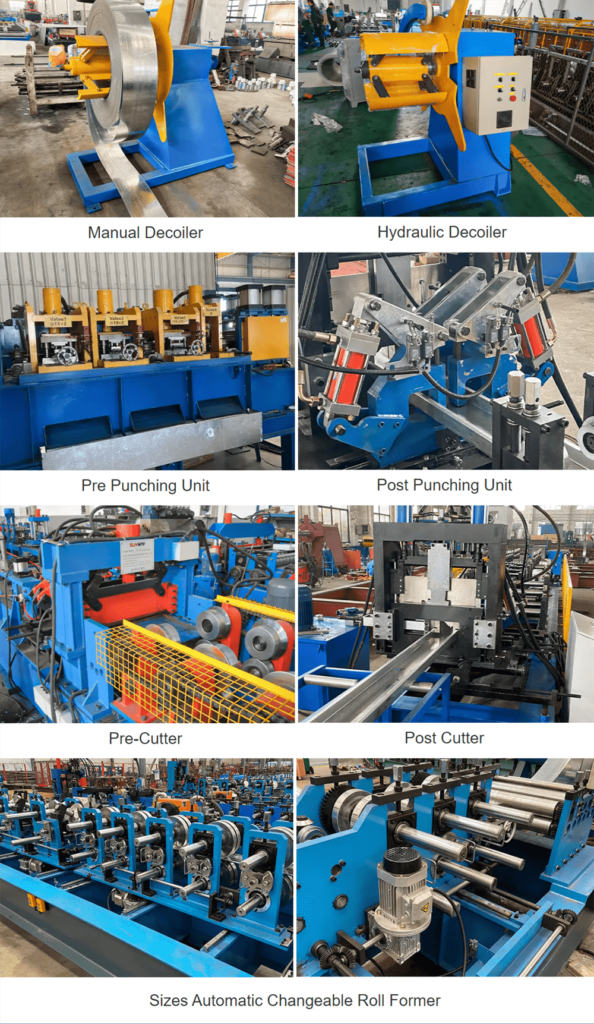
Top 5 Best manufacturers of Steel Stud Roll Forming Machine
1.Formtek Group
फॉर्मटेक लंबे समय से स्थापित ब्रांडों का एक समूह है, जिनमें से प्रत्येक एक प्रसिद्ध नाम और धातु बनाने और धातु प्रसंस्करण उद्योगों को नवीन और विश्वसनीय उपकरण प्रदान करने का इतिहास है। फॉर्मटेक अपने ब्रांडों की "सर्वश्रेष्ठ श्रेणी" तकनीक और उपकरणों को एकीकृत विनिर्माण प्रणालियों में जोड़ता है जो शीट धातु से सटीक उत्पाद बनाने की उत्पादकता में सुधार करते हैं।
2.Samco Machiner
सैमको मशीनरी दुनिया भर में उद्योगों की एक विस्तृत श्रृंखला की सेवा के लिए रोलफॉर्मिंग मशीनों का डिजाइन और निर्माण करती है। आपकी विशिष्ट धातु झुकने की जरूरतों को पूरा करने वाले अंतिम उत्पादों को अनुकूलित और बनाना, वे भवन और निर्माण, रैकिंग और ठंडे बस्ते, परिवहन और सौर सहित कई उद्योगों के लिए समाधान प्रदान करते हैं।
3.Yoder Machinery
योडर मशीनरी एक अग्रणी रोल बनाने की मशीन आपूर्तिकर्ता है। वे मशीनों की एक विस्तृत श्रृंखला पेश करते हैं जो विभिन्न प्रकार के बजट के लिए उपयुक्त हैं। उनकी ग्राहक सेवा उत्कृष्ट है, और उच्च गुणवत्ता वाली मशीनें प्रदान करने के लिए उनकी अच्छी प्रतिष्ठा है।
4.Winton Machine
विंटन मशीन रोल बनाने वाली मशीनों की एक और शीर्ष आपूर्तिकर्ता है। वे ऑटोमोटिव, निर्माण और उपकरण निर्माण सहित विभिन्न उद्योगों के लिए मशीनों की पेशकश करते हैं। विंटन मशीन मशीन की मरम्मत और प्रतिस्थापन सहित सेवाओं की एक विस्तृत श्रृंखला भी प्रदान करती है।
WUXI SUNWAY MACHINERY CO., LTD is a professional manufacturer and exporter that are concerned with the design, development and production of roll forming machines. All products comply with international quality standards and are greatly appreciated in a variety of different markets throughout the world, such as Asia, Africa, Europe, South America, and Australia and so on. It has gained a global sales network.
-
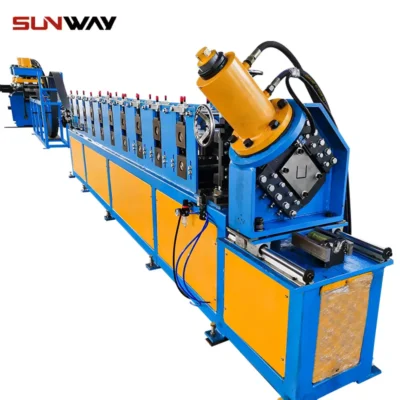 विद्युत कैबिनेट फ्रेम रोल बनाने की मशीन
विद्युत कैबिनेट फ्रेम रोल बनाने की मशीन -
 दीन रेल रोल बनाने की मशीन
दीन रेल रोल बनाने की मशीन -
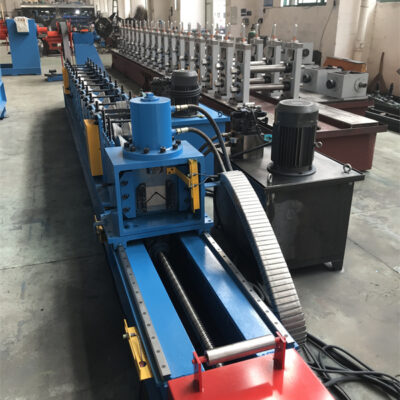 एल कोण रोल बनाने की मशीन
एल कोण रोल बनाने की मशीन -
 केबल सीढ़ी रोल बनाने की मशीन
केबल सीढ़ी रोल बनाने की मशीन -
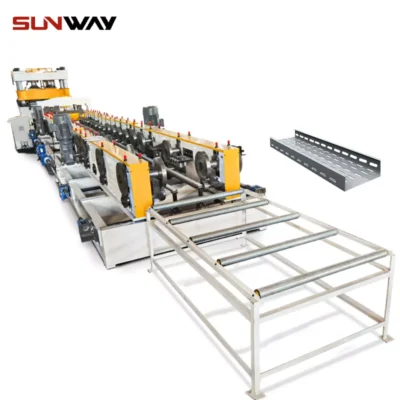 केबल ट्रे रोल बनाने की मशीन
केबल ट्रे रोल बनाने की मशीन -
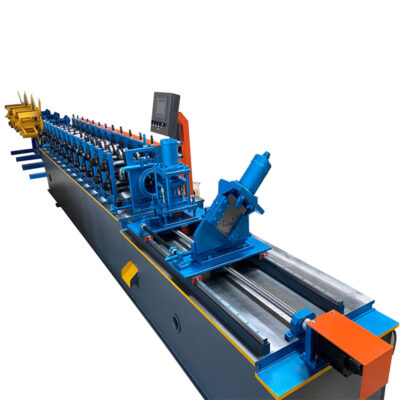 लाइट गेज कील स्टड ट्रैक सी चैनल स्टील रोल बनाने की मशीन ड्राईवॉल मेटल सी स्टड मशीनरी
लाइट गेज कील स्टड ट्रैक सी चैनल स्टील रोल बनाने की मशीन ड्राईवॉल मेटल सी स्टड मशीनरी -
 स्टील का तार लंबाई लाइन मशीन में कटौती
स्टील का तार लंबाई लाइन मशीन में कटौती -
 स्टील का तार लंबाई लाइन मशीन में कटौती
स्टील का तार लंबाई लाइन मशीन में कटौती -
 स्टील का तार लंबाई लाइन मशीन में कटौती
स्टील का तार लंबाई लाइन मशीन में कटौती
निष्कर्ष
Steel stud roll forming machines are an essential part of any construction project. In this guide, we’ve covered everything you need to know about these machines, from how they work to the benefits they offer. We hope that this guide has given you a better understanding of steel stud roll forming machines and their role in construction projects. If you’re considering purchasing a machine for your own construction business, be sure to check out our selection of steel stud roll forming machines.
Frequently Asked Questions (FAQ)
1) What profiles can a Steel Stud Roll Forming Machine produce for drywall systems?
- Common profiles include C studs, U tracks, resilient channels, furring channels, and custom knock-out patterns for MEP. Typical gauges are 0.4–1.2 mm (26–18 ga) galvanized steel meeting ASTM C645/C754 or EN 14195.
2) What tolerances are realistic for interior steel studs and tracks?
- Best-practice targets: width ±0.5 mm, flange height ±0.4 mm, web bow ≤1 mm/m, twist ≤1°/m, knockout pitch ±0.5 mm, cut length ±0.8 mm over 3–4 m, when using servo flying shear and laser length encoders.
3) How does pre-punching integrate with stud roll forming?
- A servo-controlled pre-punch press upstream of the forming stands handles service holes, knockouts, and identification slots. Pattern changes are recipe-driven via the HMI; vision inspection can close the loop to maintain hole pitch at speed.
4) Can the same line run both studs and tracks efficiently?
- Yes, via cassette/tooling change systems and automatic stand positioning. Changeovers drop from 45–90 minutes to 10–25 minutes on modern lines, enabling mixed C stud/U track production in short runs.
5) What affects surface finish when running pre-painted or galvanized coils?
- Roll hardness and polish, correct roll-gap, micro-lubrication, felt wipers, crowned guides, and clean entry tables. Maintain coil tension and edge guiding to prevent scuffing or zinc pick-up.
2025 Industry Trends
- Digital recipes and auto setup: Barcode-scanned coil + profile recipe triggers auto stand positioning and roll-gap settings, reducing first‑piece scrap.
- Higher throughput with precision: Flying shear plus laser encoding supports 40–70 m/min on simple studs/tracks while holding ±0.8 mm cut length on 3–4 m parts.
- Inline QA: Vision systems verify knockout geometry and burrs at line speed, logging to MES for traceability.
- Energy reductions: IE5 motors, regenerative VFDs, and smart lubrication lower energy intensity by 15–25% vs. 2022.
- Sustainability and EPDs: Builders increasingly demand EPD-backed stud products; mills and fabricators standardize coil-to-part traceability and recycled content reporting.
2025 benchmarks for Steel Stud Roll Forming Machines
| Metric | 2022 Typical | 2025 Best-in-class | Notes |
|---|---|---|---|
| Line speed (m/min) | 15–35 | 40–70 | Simple studs/tracks with flying shear |
| Changeover time (min) | 45–90 | 10–25 | Cassette tooling + auto stands |
| Cut length tolerance (mm over 3–4 m) | ±1.5–2.0 | ±0.5–0.8 | Laser encoder + servo shear |
| Knockout pitch tolerance (mm) | ±1.0 | ±0.5 | Vision-assisted closed loop |
| First-pass yield after changeover (%) | 93–96 | 98–99.5 | Recipe control + SMED |
| Energy intensity (kWh/ton) | 120–160 | 90–115 | IE5 + regen drives |
| OEE (%) | 60–70 | 75–85 | Higher uptime/quality |
Selected references:
- ASTM C645/C754 (non-structural steel framing): https://www.astm.org
- EN 14195 (metal framing components): https://standards.iteh.ai
- The Fabricator—roll forming best practices: https://www.thefabricator.com
- NIST MEP—SMED/OEE resources: https://www.nist.gov/mep
- ISO 50001—energy management: https://www.iso.org
Latest Research Cases
Case Study 1: Vision-Guided Knockout Control for Drywall Studs (2025)
Background: A EU drywall supplier had variable knockout pitch at 50 m/min on 0.55 mm G90 coils, increasing field rework.
Solution: Integrated camera-based inspection with encoder-synced corrections to the servo pre-punch; added auto stand positioning and digital recipes.
Results: Knockout pitch Cpk improved from 1.05 to 1.78; scrap reduced from 3.2% to 0.9%; first-piece approval time fell by 60%.
Case Study 2: Energy Optimization on Multi-SKU Stud/Track Line (2024)
Background: A North American fabricator sought energy savings and higher OEE during frequent changeovers.
Solution: Upgraded to IE5 motors with regenerative drives, implemented micro-lube, and adopted cassette tooling with standardized SMED procedures.
Results: Energy intensity down 22% (kWh/ton); average changeover reduced from 62 to 21 minutes; OEE increased from 67% to 81%.
Expert Opinions
- Rob Dietrich, Director of Engineering, Formtek
Viewpoint: “For light-gauge stud lines, knockout precision is won or lost at the pre-punch. Encoder sync and vision feedback are now table stakes for holding ±0.5 mm pitch at high speed.” - Dr. Daniel Schaeffler, President, Engineering Quality Solutions
Viewpoint: “Pass design and roll-gap control are critical to minimize camber and twist on thin gauges. Consistent coil mechanicals and proper lubrication prevent edge wave that shows up as drywall fit issues.” - Maria Alvarez, Operations Manager, Samco Machinery
Viewpoint: “Cassette tooling with automatic stand positioning routinely halves changeover time on stud/track families. Most customers see sub‑12‑month ROI when running multi-SKU programs.”
Practical Tools/Resources
- Roll design and simulation: COPRA RF / COPRA FEA RF (https://www.data-m.de), AutoForm (https://www.autoform.com)
- Inline metrology/vision: Keyence (https://www.keyence.com), Cognex (https://www.cognex.com)
- Standards and compliance: ASTM C645/C754 (https://www.astm.org), EN 14195 (https://standards.iteh.ai), ISO 9001 (https://www.iso.org)
- Maintenance/Energy: Fiix CMMS (https://www.fiixsoftware.com), UpKeep (https://www.upkeep.com), ISO 50001 (https://www.iso.org)
- Industry learning: The Fabricator—roll forming (https://www.thefabricator.com), NIST MEP (https://www.nist.gov/mep)
Last updated: 2025-10-20
Changelog: Added 5 FAQs tailored to Steel Stud Roll Forming Machine users; introduced 2025 benchmarks table and key trends; added two recent case studies; included expert viewpoints; curated practical tools/resources with authoritative links
Next review date & triggers: 2026-04-15 or earlier if ASTM/EN framing standards are revised, major OEMs release sub-10-minute cassette changeover systems, or new energy regulations mandate IE5/regenerative drives
